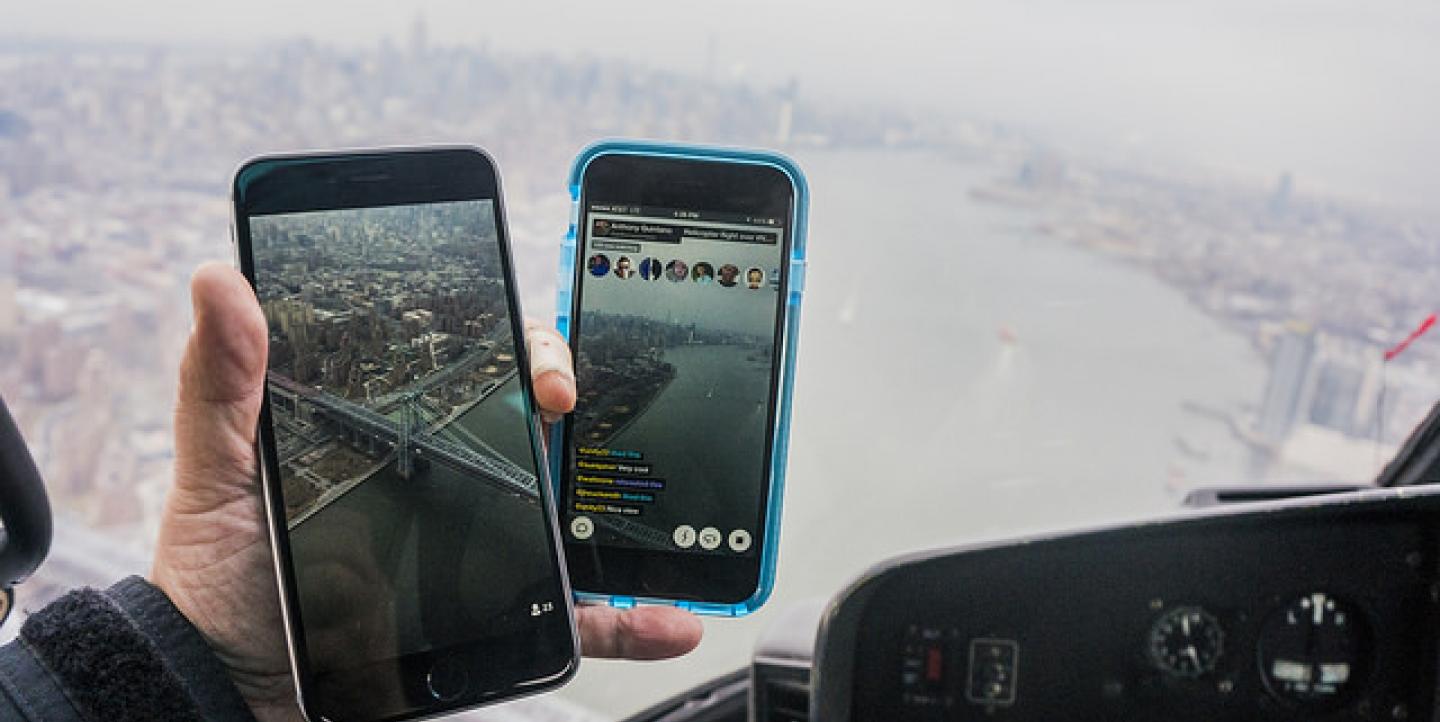Updated Friday, March 27 at 4 p.m.
Live-streaming apps aren't new to mobile, as Bambuser, UStream and others let users stream video right from their phones, but there is a new innovation happening in the real-time video arena that could prove extremely useful to journalists.
A number of social streaming apps have just hit the market, allowing users to live-stream content direcly to their Twitter and/or Facebook followers while engaging with their viewers right from the app.
Among those apps is Meerkat, which launched in February for iOS devices, and lets users stream immediately to their Twitter followers. A new stream sends a tweet that starts with the message [Live Now], followed by the stream link.
Without needing to switch to Twitter, the app allows you to see who is viewing your stream and also lets you interact with them live.
Meerkat proved to be extremely popular among users, amassing 120,000 users within two weeks of its launch and raising US$14 million in funding. CNBC used the app to give an inside look to its editorial process. CNN's Brian Stelter gave viewers a tour of the newsroom.
|LIVE NOW| http://t.co/iakHIzLRii's morning meeting #meerkat http://t.co/dQJm8RYHFI
— CNBC (@CNBC) March 27, 2015Twitter now has its own live-streaming tool on the market, Periscope, which officially launched Thursday for iOS devices. Twitter acquired Periscope in January, but the unreleased product was still in development when Meerkat exploded at the film, interactive and music festival SXSW in March, letting users stream concerts, panels and more.
Like Meerkat, Periscope allows users to stream live to their Twitter followers and interact with them within the app. Unlike Meerkat, Periscope lets you see the broadcasts of people you follow for up to 24 hours by showing them as a timeline when you open the app.
As a Periscope user, you can use the "people" tab to find the people you follow on Twitter. Like Meerkat, it sends a tweet to your followers alerting them of the start of your broadcast.
Both apps allow users to leave comments while watching the broadcast, but Periscope has made the interaction more effective by reducing the streaming latency to two seconds. This way the broadcaster can actually respond to the users' comments in real time.
Periscope also allows you to share a certain broadcast with your followers and you can also sign up to receive alerts when the people you follow post a new broadcast. Another neat feature that Periscope has is it allows users to like a certain broadcast by sending a heart icon. Every time someone "likes" a broadcast, another heart icon will be displayed on the screen.
A number of news organizations have already started using Periscope including the Huffington Post Live, the Washington Post and a local news station in Atlanta, Georgia.
Commenting on the re-emergence of these new live-streaming apps the Washington Post’s Wesley Lowery said on Twitter:
Another similar app is Stre.am. This one allows you to share your video live to your followers on Twitter and Facebook. It also allows you to save highlights of your videos as “reels” and share them for up to 24 hours.
A number of media analysts are asking whether Twitter’s Periscope will crush the other similar apps, or if the market will have space for all of these apps to coexist. It’s still too early to tell, but regardless it's an exciting time in the world of social live streaming.
Image CC-licensed on Flickr via quintanomedia


